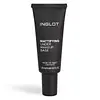What's inside
What's inside
 Key Ingredients
Key Ingredients

 Benefits
Benefits

 Concerns
Concerns

 Ingredients Side-by-side
Ingredients Side-by-side

Polysilicone-11
Dimethicone
EmollientCyclopentasiloxane
EmollientWater
Skin ConditioningButylene Glycol
HumectantNylon-12
Silica
AbrasivePEG-10 Dimethicone
Skin ConditioningEnantia Chlorantha Bark Extract
Skin ConditioningPhenoxyethanol
PreservativeIsohexadecane
EmollientLaureth-12
EmulsifyingCaprylyl Glycol
EmollientPolysorbate 40
EmulsifyingAmmonium Polyacryloyldimethyl Taurate
Emulsion StabilisingHexylene Glycol
EmulsifyingEthylhexylglycerin
Skin ConditioningOleanolic Acid
Skin ConditioningPolysilicone-11, Dimethicone, Cyclopentasiloxane, Water, Butylene Glycol, Nylon-12, Silica, PEG-10 Dimethicone, Enantia Chlorantha Bark Extract, Phenoxyethanol, Isohexadecane, Laureth-12, Caprylyl Glycol, Polysorbate 40, Ammonium Polyacryloyldimethyl Taurate, Hexylene Glycol, Ethylhexylglycerin, Oleanolic Acid
Caprylyl Methicone
Skin ConditioningWater
Skin ConditioningPEG-12 Dimethicone/PPG-20 Crosspolymer
Phenethyl Disiloxane
Skin ConditioningPolysilicone-11
Cyclopentasiloxane
EmollientIsodecyl Neopentanoate
EmollientVinyl Dimethicone/Methicone Silsesquioxane Crosspolymer
Cyclomethicone
EmollientPEG-10 Dimethicone
Skin ConditioningSodium Hyaluronate
HumectantPseudoalteromonas Exopolysaccharides
Skin ConditioningSodium Salicylate
PreservativeAdipic Acid/Neopentyl Glycol Crosspolymer
Methyl Methacrylate/PEG/PPG-4/3 Methacrylate Crosspolymer
Tocopherol
AntioxidantAcrylamide/Sodium Acryloyldimethyltaurate Copolymer
Emulsion StabilisingSilica Dimethyl Silylate
EmollientLaureth-12
EmulsifyingPolyacrylate Crosspolymer-6
Emulsion StabilisingIsohexadecane
EmollientPolysorbate 80
EmulsifyingDimethicone
EmollientCyclohexasiloxane
EmollientCetearyl Dimethicone Crosspolymer
Vp/Va Copolymer
Cyclotetrasiloxane
EmollientAmodimethicone
Hydroxypropyl Methylcellulose
Emulsion StabilisingCitric Acid
BufferingButylene Glycol
HumectantHexylene Glycol
EmulsifyingEthylhexylglycerin
Skin ConditioningPhenoxyethanol
PreservativeChlorphenesin
AntimicrobialCaprylyl Methicone, Water, PEG-12 Dimethicone/PPG-20 Crosspolymer, Phenethyl Disiloxane, Polysilicone-11, Cyclopentasiloxane, Isodecyl Neopentanoate, Vinyl Dimethicone/Methicone Silsesquioxane Crosspolymer, Cyclomethicone, PEG-10 Dimethicone, Sodium Hyaluronate, Pseudoalteromonas Exopolysaccharides, Sodium Salicylate, Adipic Acid/Neopentyl Glycol Crosspolymer, Methyl Methacrylate/PEG/PPG-4/3 Methacrylate Crosspolymer, Tocopherol, Acrylamide/Sodium Acryloyldimethyltaurate Copolymer, Silica Dimethyl Silylate, Laureth-12, Polyacrylate Crosspolymer-6, Isohexadecane, Polysorbate 80, Dimethicone, Cyclohexasiloxane, Cetearyl Dimethicone Crosspolymer, Vp/Va Copolymer, Cyclotetrasiloxane, Amodimethicone, Hydroxypropyl Methylcellulose, Citric Acid, Butylene Glycol, Hexylene Glycol, Ethylhexylglycerin, Phenoxyethanol, Chlorphenesin
Ingredients Explained
These ingredients are found in both products.
Ingredients higher up in an ingredient list are typically present in a larger amount.
Butylene Glycol (or BG) is used within cosmetic products for a few different reasons:
Overall, Butylene Glycol is a safe and well-rounded ingredient that works well with other ingredients.
Though this ingredient works well with most skin types, some people with sensitive skin may experience a reaction such as allergic rashes, closed comedones, or itchiness.
Learn more about Butylene GlycolCyclopentasiloxane, or D5, is a silicone used to improve texture of products and trap moisture.
D5 is considered lightweight and volatile. Volatile means it evaporates quickly after application. Once evaporated, D5 leaves a thin barrier that helps keep skin hydrated.
It is also an emollient. Emollients help soften the skin and prevent water loss. Silicones create a silky texture in products. D5 helps other ingredients become more spreadable.
Studies show D5 is safe to use in skincare products. We recommend speaking with a skincare professional if you have concerns.
Learn more about CyclopentasiloxaneDimethicone is a type of synthetic silicone created from natural materials such as quartz.
What it does:
Dimethicone comes in different viscosities:
Depending on the viscosity, dimethicone has different properties.
Ingredients lists don't always show which type is used, so we recommend reaching out to the brand if you have questions about the viscosity.
This ingredient is unlikely to cause irritation because it does not get absorbed into skin. However, people with silicone allergies should be careful about using this ingredient.
Note: Dimethicone may contribute to pilling. This is because it is not oil or water soluble, so pilling may occur when layered with products. When mixed with heavy oils in a formula, the outcome is also quite greasy.
Learn more about DimethiconeEthylhexylglycerin (we can't pronounce this either) is commonly used as a preservative and skin softener. It is derived from glyceryl.
You might see Ethylhexylglycerin often paired with other preservatives such as phenoxyethanol. Ethylhexylglycerin has been found to increase the effectiveness of these other preservatives.
Hexylene Glycol is a surfactant. Glycols are a class of alcohols. Hexylene Glycol is a surfactant and emulsifier.
As a surfactant, Hexylene Glycol helps gather dirt and oil on your skin to be washed away.
As an emulsifier, Hexylene Glycol helps keep water and oil together. This prevents them from separating in a product. Hexylene Glycol also thins out the texture of a product by lessening viscosity.
Hexylene Glycol has a small molecular weight.
Learn more about Hexylene GlycolIsohexadecane is added to enhance texture, emulsify, and to help cleanse. It is an isoparrafin. It is a component of petrolatum.
Due to its large size, Isohexadecane is not absorbed by the skin. Instead, it sits on top and acts as an emollient. Emollients help keep your skin soft and smooth by trapping moisture within.
Isohexadecane is often used in products designed to help oily skin. It is lightweight and non-greasy while helping to moisturize. When mixed with silicones, it gives a product a silky feel.
Learn more about IsohexadecaneWe don't have a description for Laureth-12 yet.
Peg-10 Dimethicone is silicone with conditioner and emulsifier properties. It mostly acts as an emollient in skincare and and humectant in haircare.
According to the manufacturer, acidic formulations decrease the stability of this ingredient. It works best in neutral or near neutral formulations.
Phenoxyethanol is a preservative that has germicide, antimicrobial, and aromatic properties. Studies show that phenoxyethanol can prevent microbial growth. By itself, it has a scent that is similar to that of a rose.
It's often used in formulations along with Caprylyl Glycol to preserve the shelf life of products.
Polysilicone-11 is a film-forming silicone that creates a non-tacky and matte finish on the skin. It's commonly used to improve texture, absorb excess oil, and help active ingredients spread evenly.
Due to its "rubber-like" structure, it stays on the skin's surface instead of being absorbed. On the skin, it creates a flexible layer that enhances wearability and stability.
Water. It's the most common cosmetic ingredient of all. You'll usually see it at the top of ingredient lists, meaning that it makes up the largest part of the product.
So why is it so popular? Water most often acts as a solvent - this means that it helps dissolve other ingredients into the formulation.
You'll also recognize water as that liquid we all need to stay alive. If you see this, drink a glass of water. Stay hydrated!
Learn more about Water